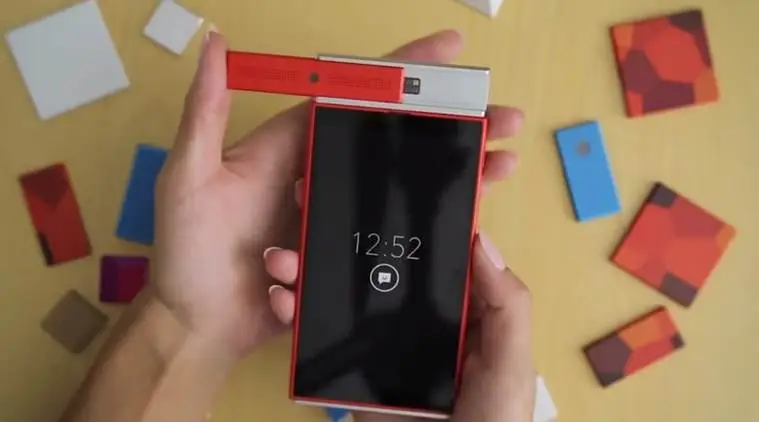- India
- International
Google’s Project Ara: Are you ready to assemble your own smartphone?
Market pilot of modular phone in 2015, but we could be a couple of years away from buying it.
 Market pilot of modular phone in 2015, but we could be a couple of years away from buying it. (Source: Google)
Market pilot of modular phone in 2015, but we could be a couple of years away from buying it. (Source: Google)
What if you could decide the power of the processor, resolution of the display and sensor of the camera every time you picked up your smartphone to leave home? It might sound like science fiction, but this is exactly what Google is working on at the moment. In fact, its Project Ara aims to bring in a modular smartphone that can be changed according to the user’s character and preferences.
While IndianExpress.com got a sneak peak into the prototypes, the market pilot is expected to be available in 2015. Paul Eremenko, who developed the project and leads it now, sums up the concept as the “hardware version of Android”. “Our stated objective around Project Ara is to democratise the hardware ecosystem around mobile. We want to drastically lower the barrier of entry for developers,” he added in a video chat earlier this week. “We decided to go ahead with Project Ara because we felt that finally we were at a point where the overhead penalty of making something modular could be made small enough that it would be acceptable to the consumer.”
 Paul Eremenko showing a prototype and a camera module during a Google Hangout session with IndianExpress.com
Paul Eremenko showing a prototype and a camera module during a Google Hangout session with IndianExpress.com
At the core of Project Ara is the endoskelton, or the frame, on which the modules will go. Google want to produce these for around $50 and spawn and “app level of innovation” with the modules. The idea is to let developers market the modules directly to consumers, maybe through the Google Play store. This means once you buy the endoskelton, you can go to the store and buy any module you want. There will be three frame sizes to choose from, the mini, medium and jumbo and the smallest of them will have slots for 10 modules.
The possibilities are endless. For instance, you could buy a jumbo frame and use only half of it for the screen, the rest could be the keyboard. If on a long trip, you could drop a lot of other modules and replace them with battery modules so that you don’t run out of power.
While it seems as simple as building blocks, Project Ara will actually be ushering in cutting edge technology into your hands. “This is the first initiation of a network on device concept in the mobile form factor,” explains Eremenko, adding that any modules can draw or supply power and also be a power storage device at the same time. While the modules will transmit data and power using inductive contactless coupling, they will have electropermanent magnets that connect them to the frame. Simply put, the design won’t have any connectors and users will be able to hot swap any module.

Eremenko thinks the biggest impact will come when people will be able to manage power better by being able to use multiple battery packs and also when developers start bringing in modules that can monitor health and fitness. While critical mass is still a couple of years away, over time Ara could end up being a cheaper alternative as it will let users avoid paying for hardware features they never use. But for now Eremenko says pricing is a long way off.
Google understands that the thirst for customisation is much more on mobile and that will be one of the key drivers for adoption of Project Ara. And Google is not the only company trying to cash in on this. While Chinese telecom giant ZTE has showcased its modular concept called the Eco-Mobius, Israeli startup Modu Mobile which was making a name for itself with modular phones designs was acquired by Google a couple of years back. Eremenko says Google is interested in making the modular phone platform interoperable and that is why they have chosen industry standard protocol and put everything out there.
 ALSO READ: Google not alone
ALSO READ: Google not alone
We are at least a couple of years away from being able to buy a modular phone frame or the modules to populate it. But when Project Ara is finally here, it could change the way we think about and use mobile phones. The tech world is looking at a scenario where small hardware developers could grow to scale by offering customers innovative modules which would not have found acceptance with mainstream brands. The appification of mobile phone hardware is almost here.
More Tech
Apr 26: Latest News
- 01
- 02
- 03
- 04
- 05










































